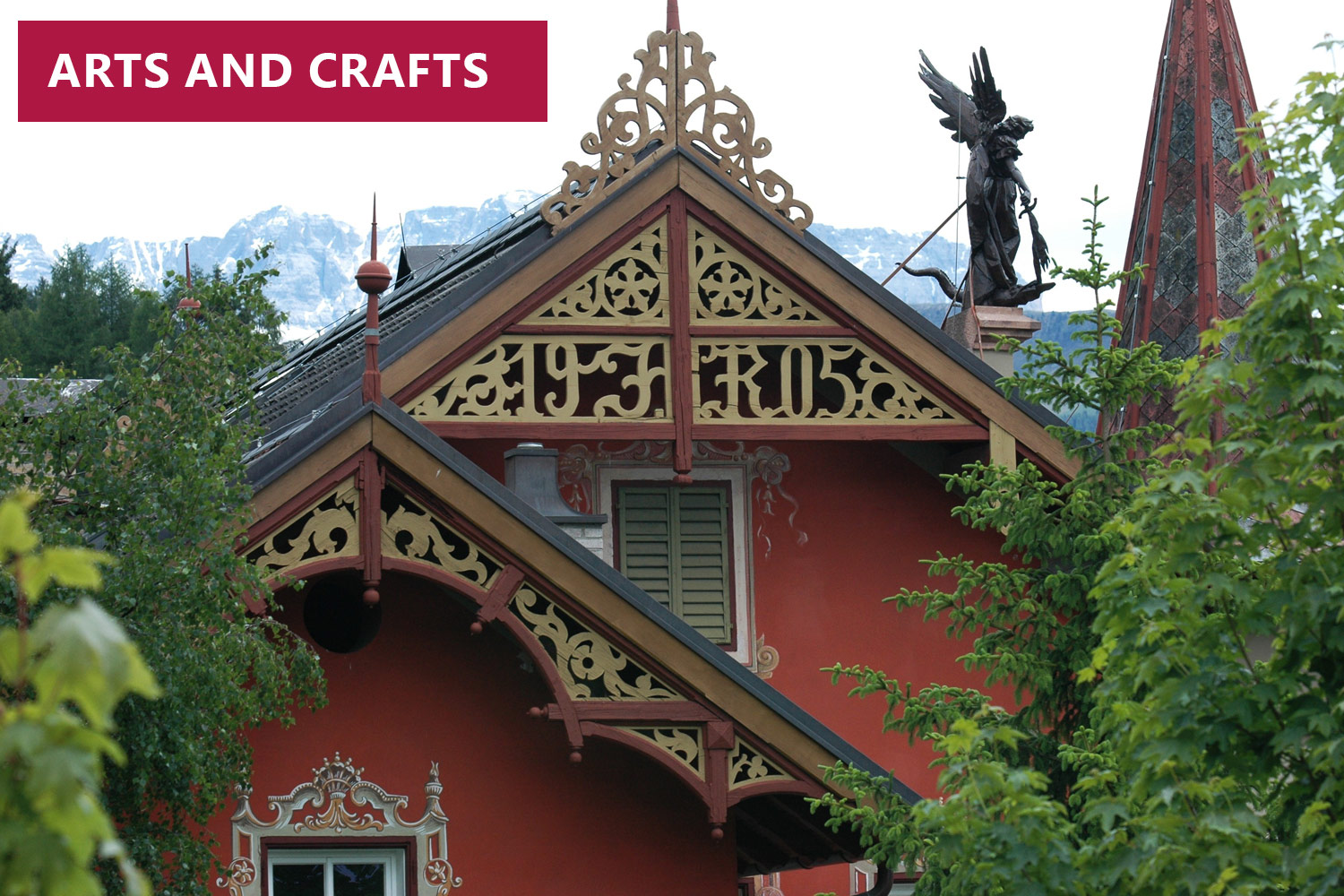
Tour description
Which traces are we following on this route?
Having been hugely shaped by agriculture only a few decades earlier, Gröden became an important centre for sacred art production for the Habsburg monarchy around 1900. This brought about a change in the face of St. Ulrich; workshops for sculpting, carpentry and painting sprung up, bringing prosperity along with economic success - no longer in the form of the construction of ordinary houses, but in the form of elegant villas. These villas were inspired by examples from the major cities in Europe, and tell a unique story about how Gröden reflected the industrial boom in Europe on a societal and culture level.
What awaits us?
The whole tour goes past late-19th and early-20th century villas and workshops and is around 3.4 km long. Walking time is around 1 ¼ hours and a difference in altitude of 300 metres is involved. This tour may also be done as a guided circular walk taking around two and a half hours.
Where does the tour go?
We leave from Museum Gherdëina and head in the direction of Antoniusplatz square, carrying on left down Reziastraße past Villa Venezia, Villa Argentina and the art school up to the Blaues Haus. Here, we turn left again into Stufanstraße and walk past Villa Runggaldier, Villa Margherita, Villa Rifesser and Villa Grohmann in the direction of the parish church.
Shortly before the church, a small path goes down to the promenade. We get to the valley station of Secëda cable car through La Curta underpass. Then we cross Romstraße towards Raschschötzer valley cable car station and go past Haus Doss and Haus Costa. Once there, we walk up Raschötzstraße and pass Haus Lenert, Villa Rudolfine and Villa Martiner on our way. At the top, we first go up the hill to the left and then onwards via Scurcià Straße to Sonnenburg and Haus Lusenberg. Then we head back downhill to the village centre. At the junction with Muredahügel, where Scuracià Straße turns into Sneton Straße, we see Plan de Mureda, the oldest villa in the village, on the left-hand side. At the end of the road at Panabrücke bridge, we see Haus Bugon and Haus Pana, the former seats of two successful toy distributors. The church across the bridge marks the end of our circular tour.